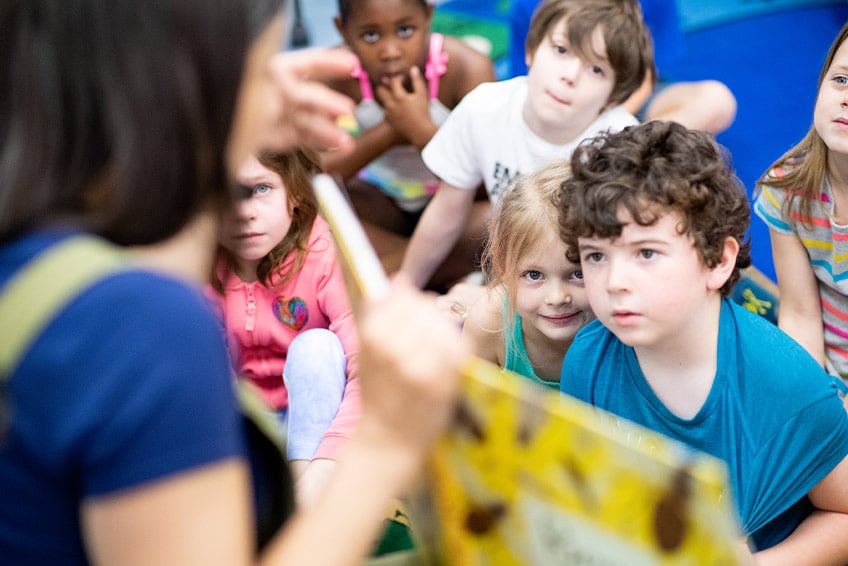 Around the end of August, many parents begin to wonder if there are steps that they can take to help set their child up for a successful start to the school year. This year is no different, despite the fact that we as a nation are still grappling with the challenge of COVID-19.
Around the end of August, many parents begin to wonder if there are steps that they can take to help set their child up for a successful start to the school year. This year is no different, despite the fact that we as a nation are still grappling with the challenge of COVID-19.
Though many aspects of what we consider a “normal” school year will undoubtedly look different this year—no crowded school buses or cafeterias, for example—the most important aspects remain the same: Quality education, lasting friendships, and emotional growth.
Free Downloadable Guide: Take a Closer Look at Friends' Central School
With this in mind, we have gathered together the following tips that parents and families can use to set their children up for success this school year and beyond.
8 Back to School Tips for Parents
1. Talk to your child’s school.
One of the very best things you can do as a parent to help your child this year is to simply speak to members of your school’s community: The leadership, teachers, and faculty who will be responsible for your child’s safety and education. Make sure that you understand the school’s policies, how they plan to start the school year, and any contingency plans they may have in place should the scenario change. This information can put you at ease, which in turn will allow you to put your child at ease.
At the same time, don’t be afraid of asking questions. If your child’s school has a policy that you don’t understand, ask for details; if you can connect with your child’s teachers, ask them if they specifically recommend any supplies or strategies. It never hurts to ask questions.
2. Talk to your child.
Depending on your child’s age and whether or not they were already in school when the pandemic emerged last spring, you may have already had a discussion about Coronavirus, social distancing, and what it all means. But if you haven’t, it’s an important discussion to have, especially if your child will be attending in-person classes. Remember, the intention is to inform—not frighten—your child.
At the same time, this can be a great time to ask your child if they have any questions, concerns, or worries. If they do, simply do your best to answer them and put their minds at ease. It’s important that your child understands that, so long as we all do our own part, we will get through this challenge together.
3. Guide your child to finish any summer assignments that they may have pending.
Did your child’s school send home a math packet or summer reading assignment? With so many schools starting later this year, it’s possible that your child might still have some work to finish. If so, it can be a good idea to guide your child along towards finishing those assignments early so that they don’t have the added stress of scrambling to finish them at the last minute before classes begin.
4. Create a designated space in your home for virtual learning.
Even if your child’s school has plans to begin the school year with in-person classes, it can be a good idea to take the time now to set up a virtual learning space for your child. This will ensure that, if the situation changes and your child’s school is forced to make a shift back to distance learning due to safety concerns, you will be ready for it.
5. Set a schedule, and stick to it.
For many students, summer is a time of staying up later and sleeping in past what would normally be the time they wake up for school. While this is understandable, it can also lead to some issues at the start of the school year as children readjust to their early morning routines. Taking the final few weeks of summer vacation to begin reestablishing a schedule can make the transition to school much easier.
Setting a schedule, and sticking to it, is especially critical if your child will be learning from home. In these cases, it’s important not only to plan for class time, but also homework time, relaxation time, and family time. Find a schedule that works for your family, and do your best to stick to it.
6. Think about ways of keeping your child engaged.
There’s no denying the fact that the past few months of social distancing and virtual learning have been difficult for many children and families. While this is certainly understandable, if you find that your child is no longer as engaged in the learning process as they once were, it’s important to try and figure out why—and take actions to resolve the issue. You can find some ideas for achieving that goal here.
7. Don’t forget the importance of staying active.
Staying active is important for so many reasons. It helps us stay healthy, gets us in tune with our bodies, and can even help to regulate our mood, making it just as important now during a global pandemic as during any other time. While it’s true that your child might not be able to participate in team sports like soccer, football, basketball, or baseball, that doesn’t mean your child can’t stay active. There are plenty of alternatives to team sports that you can encourage your child to try.
8. Take steps to help your child maintain their friendships.
Staying connected with friends and family has been tricky the last few months, as social distancing has forced so many of us apart in the name of safety. But just because your child can’t be in the same room as their friends doesn’t mean that they can’t spend time together and maintain those important relationships.
Doing What’s Right for Your Family
If, as you prepare for the end of summer and start of the school year, you find that your child’s school truly isn’t ready to offer a safe and practical educational experience, it might be time to consider changing schools. Even though the fall semester is only a few weeks away, many schools still have open seats and the ability to welcome your family into its community.



